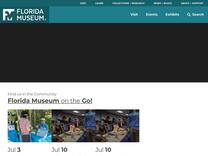Ichetucknee River – Florida Vertebrate Fossils https://www.floridamuseum.ufl.edu/florida-vertebrate-fossils/sites/ichetucknee-river/
Ichetucknee River University of Florida Vertebrate Fossil Localities CO001, CO028, CO031, CO042, CO043, CO044, CO045, CO046, CO053, CO063, CO064, CO065, CO066, CO067, CO068, CO069, CO081, CO086, and CO087 Location The river is about 4.1 miles (6.7 km) northwest of Fort White, Columbia-Suwannee co
Natural History Museum of Los Angeles County Contributions in Science 330:119-129

